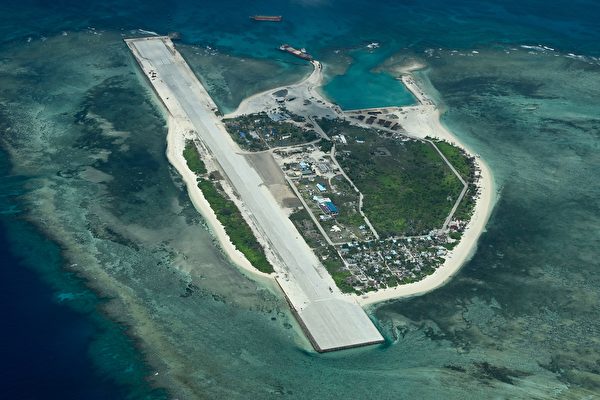The Philippines submitted its sovereignty claim over the Extended Continental Shelf (ECS) in the South China Sea to the United Nations on Saturday (June 15). The maritime disputes between the Philippines and China in this region are escalating rapidly. On the same day, new regulations by the Chinese Coast Guard came into effect, allowing the detention of Filipino fishermen who “illegally” enter disputed waters.
Assistant Secretary of State for Maritime and Ocean Affairs of the Philippine Department of Foreign Affairs, Marshall Louis Alferez, stated in a press release, “Today, we ensure our future by asserting our exclusive rights to explore and exploit the natural resources on our continental shelf.”
China claims sovereignty over nearly the entire South China Sea, including areas claimed by the Philippines, Brunei, Malaysia, Taiwan, and Vietnam. It is believed that this strategic waterway holds abundant oil and natural gas resources, as well as fisheries resources, facilitating trade worth trillions of dollars annually.
In 2016, the Permanent Court of Arbitration ruled that China’s expansive claims had no legal basis, but Beijing rejected the decision and continued to engage in sovereignty disputes with neighboring countries, particularly the Philippines. China has obstructed Filipino troops stationed at Thitu Island from receiving supplies to defend their sovereignty and has barred Filipino fishermen from fishing near resource-rich Scarborough Shoal. Both Thitu Island and Scarborough Shoal are within the Philippines’ Exclusive Economic Zone in the West Philippine Sea.
In confrontations with the Philippine government and fishing vessels, the Chinese Coast Guard has employed water cannons, collisions, ramming tactics, and, according to the Philippines, military-grade lasers. China has also been accused of deploying a large number of maritime militia composed of Chinese fishing vessels.
On Saturday, the Philippines sought to register its rights to the Extended Continental Shelf in the West Palawan Region facing the South China Sea.
The Philippine Department of Foreign Affairs stated that the submission had received presidential approval from Ferdinand Marcos Jr. after comprehensive technical and scientific research on the continental shelf in the West Philippine Sea.
The Philippines refers to the part of the South China Sea within its 200 nautical mile Exclusive Economic Zone as the West Philippine Sea.
The Philippines asserts that it is exercising its rights under the United Nations Convention on the Law of the Sea to determine the outer limits of its continental shelf, including the seabed and subsoil, up to a possible 350 nautical miles.
In 2012, the United Nations confirmed that the Philippine Rise (formerly Benham Rise) off the east coast of the Philippines is part of the Philippine extended continental shelf, with no disputes involving China.
Also on Saturday, the military leadership of the Philippines urged Filipino fishermen to continue normal fishing operations in their own Exclusive Economic Zone in the South China Sea without fear, as the new regulations of the Chinese Coast Guard came into effect.
Prior to this, China announced regulations enforcing a law from 2021 that allows the Chinese Coast Guard to use lethal force against foreign vessels in waters it claims sovereignty over and to detain intruders without trial for 60 days.
The Philippine Department of Foreign Affairs condemned the new Chinese regulations as a “direct violation of international law.” Philippines advised its fishermen to ignore these regulations, with the military stepping up patrols.
As tensions over sovereignty in the South China Sea escalate between China and the Philippines, Western countries led by the United States have voiced support for the Philippines, repeatedly affirming that the US-Philippines Mutual Defense Treaty applies to the South China Sea.
From late April to early May 2024, over 16,000 Philippine and US military personnel participated in a three-week “Shoulder-to-Shoulder” exercise in the Philippines. Australian and French military forces, along with observers from 14 other countries, also took part in the exercise.
While the “Shoulder-to-Shoulder” exercise was ongoing, defense ministers from the United States, Australia, Japan, and the Philippines held a meeting in Hawaii, pledging to deepen cooperation to address China’s increasingly expansionist and provocative actions. Prior to the exercise, the four countries conducted their first joint military drills in the South China Sea.

